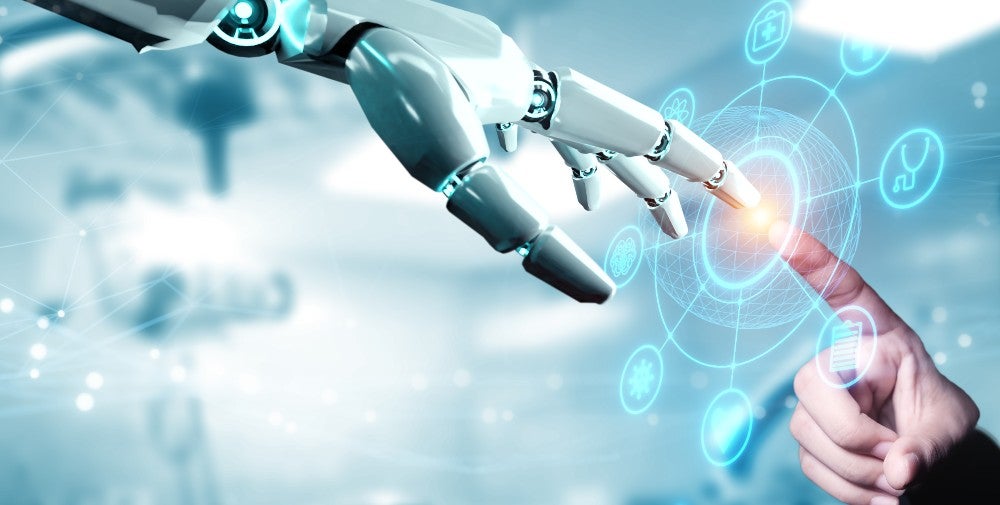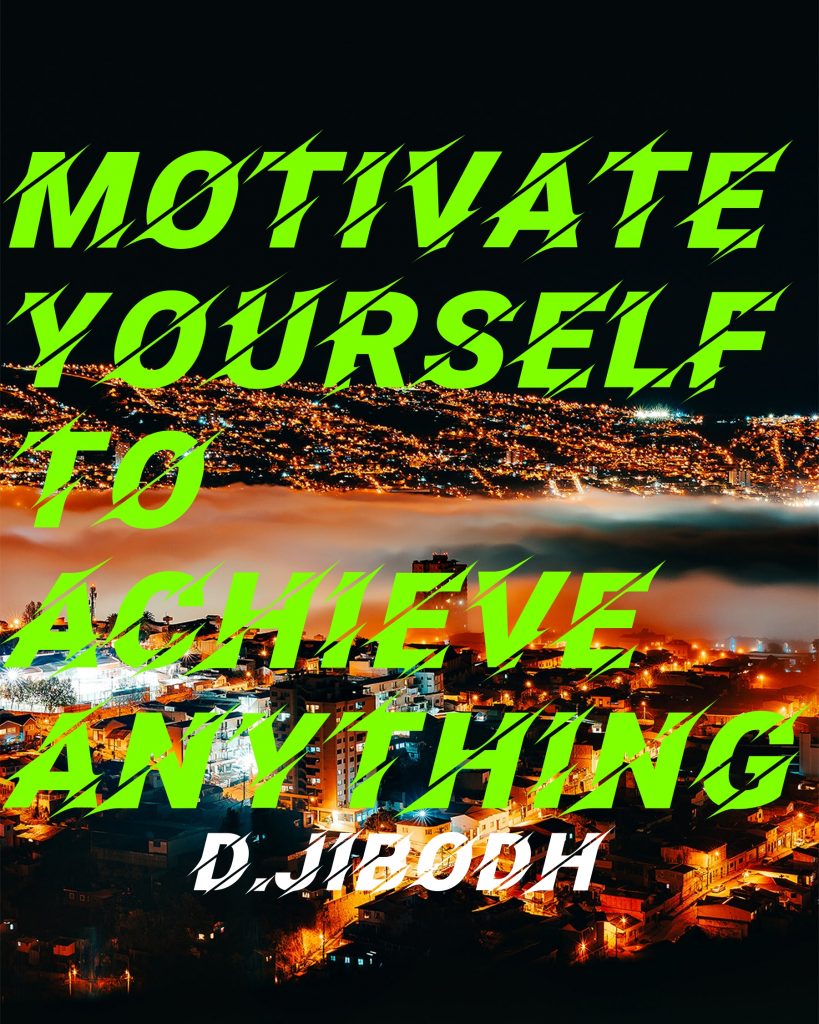We are on the eve of enormous change. Artificial intelligence is here and getting better and better. What does this mean, and what can you do now?
The era of smart machines
I’ve been shouting it to everyone who doesn’t want to hear it for years: in 2025 we live in the future .
Why do I call that?
It has been predicted for decades that artificial intelligence (better known as AI ) will surpass human intelligence by that time .
And you know what? We seem to be ahead of schedule .
In the coming years a lot will change at an unprecedented pace . And most people have no idea what’s coming our way. Perhaps this also applies to you.
I’ve been studying the rise of AI for years . This development has quite a few potential implications for your life and I think it’s good that you understand it better.
That is why in this article I will take you through a few insights that I gained. To inform you and give you some tools to move along with this new, special reality.
Let’s dive…
What’s so special about AI?
For the past quarter of a million years, we – homo sapiens – have been the smartest creatures on Earth.

That will change – and that will change everything .
The rise of AI is not the same as the rapid rise of the internet or social media or smartphones. The likely impact of AI will be much greater because it magnifies and improves what makes us humans different from other animals: our intelligence .
If artificial intelligence continues to develop at this rate (and it looks like it), within 20 years (and possibly much sooner) we will experience an evolutionary leap that humanity has not made before.
For the first time, we will be dealing with systems that are many times more intelligent than the most intelligent people who have ever lived. It’s unclear when we’ll get there. It could be next year or a hundred years from now – many experts estimate it won’t be another twenty years.
But things will change long before we get there.
In fact – it is already underway, at full speed.
Where we are at the beginning of 2023
In November 2022, OpenAI launched ChatGPT . A free chatbot (a “robot” you can text with, based on a grand language model ) with an ugly name and surprisingly powerful capabilities.
You’ve probably heard about it.
People use ChatGPT to generate theses, articles, software and even entire books. But visual art and synthetic photography have also taken off enormously.
It’s that I like writing , but practically my work is almost (not quite) relegated to ‘hobby’.
It’s still far from perfect, but we’re constantly updating and adding features. Earlier this year, GPT-4 was launched — a quantum leap and a system that researchers say shows early glimpses of human intelligence .
For many tasks, even this early version proves to be good enough . And that is an important milestone.
‘Good enough’ turns everything upside down
Why are robot vacuum cleaners so popular?
Not because they vacuum your house perfectly. They are popular because they are “good enough” for many people to make the investment worthwhile. They don’t get the job done perfectly, but they take a lot of work off your hands – and that has value.
A robot vacuum cleaner still costs quite a bit of money – access to AI is now practically free or at least incredibly cheap. And we are really only at the beginning of the AI revolution.
All the building blocks are there to transform our economy and society at all levels. The next step is to integrate this AI into the economy.
And that work is in progress.
There is nothing wrong with that in itself. Lower costs and higher productivity tend to make life better for all of us.
But if you get paid to do what an AI can do almost for free with the right plugins, then ‘good enough’ can change your life considerably.
Preparing for the age of artificial intelligence
They had promised us self-driving cars – and suddenly I have to worry about my future as an author and still watch the road too.
It shouldn’t get crazier.
Most experts agree on one thing: the rise of AI is hard to stop .
The party with the best AI has the best economic and geopolitical opportunities. Whoever has the technological edge owns the world.
There are now groups of scientists and experts calling for a deliberate delay( 2 ) in the development of AI. This would give our societies more time to adapt, to set up legislation and supervision and to investigate whether and how we can safely develop AI.
There are still many issues and challenges, but the biggest challenge at the moment seems to be the speed at which AI is improving .
What can we do?
This new future is rapidly approaching us.
We probably cannot slow down the development of AI. So what can you do?
From my perspective, there are a few things we can do to face this turbulent future in a positive way.
These are 5 practical tips that you can take with you today. I’ll go through it in a nutshell, but if there’s interest I’ll go into more detail in other articles later. Just let me know !
What’s so special about AI?
For the past quarter of a million years, we – homo sapiens – have been the smartest creatures on Earth.
That will change – and that will change everything .
The rise of AI is not the same as the rapid rise of the internet or social media or smartphones. The likely impact of AI will be much greater because it magnifies and improves what makes us humans different from other animals: our intelligence .
If artificial intelligence continues to develop at this rate (and it looks like it), within 20 years (and possibly much sooner) we will experience an evolutionary leap that humanity has not made before.
For the first time, we will be dealing with systems that are many times more intelligent than the most intelligent people who have ever lived. It’s unclear when we’ll get there. It could be next year or a hundred years from now – many experts estimate it won’t be another twenty years.
But things will change long before we get there.
In fact – it is already underway, at full speed.
Where we are at the beginning of 2023
In November 2022, OpenAI launched ChatGPT . A free chatbot (a “robot” you can text with, based on a grand language model ) with an ugly name and surprisingly powerful capabilities.
You’ve probably heard about it.
People use ChatGPT to generate theses, articles, software and even entire books. But visual art and synthetic photography have also taken off enormously.
It’s that I like writing , but practically my work is almost (not quite) relegated to ‘hobby’.
It’s still far from perfect, but we’re constantly updating and adding features. Earlier this year, GPT-4 was launched — a quantum leap and a system that researchers say shows early glimpses of human intelligence .
For many tasks, even this early version proves to be good enough . And that is an important milestone.
‘Good enough’ turns everything upside down
Why are robot vacuum cleaners so popular?
Not because they vacuum your house perfectly. They are popular because they are “good enough” for many people to make the investment worthwhile. They don’t get the job done perfectly, but they take a lot of work off your hands – and that has value.
A robot vacuum cleaner still costs quite a bit of money – access to AI is now practically free or at least incredibly cheap. And we are really only at the beginning of the AI revolution.
All the building blocks are there to transform our economy and society at all levels. The next step is to integrate this AI into the economy.
And that work is in progress.
There is nothing wrong with that in itself. Lower costs and higher productivity tend to make life better for all of us.
But if you get paid to do what an AI can do almost for free with the right plugins, then ‘good enough’ can change your life considerably.
Preparing for the age of artificial intelligence
They had promised us self-driving cars – and suddenly I have to worry about my future as an author and still watch the road too.
It shouldn’t get crazier.
Most experts agree on one thing: the rise of AI is hard to stop .
The party with the best AI has the best economic and geopolitical opportunities. Whoever has the technological edge owns the world.
There are now groups of scientists and experts calling for a deliberate delay( 2 ) in the development of AI. This would give our societies more time to adapt, to set up legislation and supervision and to investigate whether and how we can safely develop AI.
There are still many issues and challenges, but the biggest challenge at the moment seems to be the speed at which AI is improving .
What can we do?
This new future is rapidly approaching us.
We probably cannot slow down the development of AI. So what can you do?
From my perspective, there are a few things we can do to face this turbulent future in a positive way.
These are 5 practical tips that you can take with you today. I’ll go through it in a nutshell, but if there’s interest I’ll go into more detail in other articles later.
Let’s see.
1. Learn to understand what is happening
By delving a little more into AI you will better understand what is happening and how it will change your life in the near future.
Don’t fall for the most sensational headlines – there’s a lot of hype going on.
Focus on substantive reporting and marvel at examples of what artificial intelligence can (and can’t) do. Many AI experts and philosophers are guests in podcasts that can help you dive deeper into this topic.
A foundation of knowledge will help you make better decisions. For example, the development and regulation of AI will inevitably become a major election theme in the near future. This development will sooner or later become a topic of conversation at every level of society, in every organization – it is nice and valuable if you understand it a little.
2. Learn to use AI to work more effectively
Create an account at ChatGPT and play with it – the system just speaks Dutch.
Learn how to use good prompts to get better results. Explore ways to weave these capabilities into your workflow. For example by means of plugins or (if you are more handy) the API.
And remember: you can just ask the AI questions if you don’t understand something.
It is important that you develop a feel for how to collaborate with a synthetic colleague, because there is a good chance that such systems will become part of your work in the coming years.
In fact, a recent study states that 80% of all jobs will be affected or could be replaced by AI .
In addition, it is also just fun and convenient. I like to condense long texts into haiku – to each their own.
Note: ChatGPT is not perfect. It regularly gives answers that are not true. The system then begins – as they call it – to ‘hallucinate’. This is also part of the technology and of the challenges it entails.
3. Keep learning to increase your value
Now is a great time to get that education you’ve been wanting to do for a while.
The more in demand your skills are, the more value you can continue to provide in an AI-powered world. Especially if you focus on more effective collaboration with AI or on tasks that cannot (for the time being) be performed by AI.
There are a few areas that are likely to be (at least for a while) safe from AI:
- Advanced or highly personalized manual work . Such as installing heat pumps or construction. Automation will make this work easier and more efficient, as will be the case in almost every profession.
- Work in which you are paid to think . This will increasingly be done together with the input of artificial intelligence, as this will almost always lead to better results.
- Work that is valuable because it is done by a human being . Think of healthcare, education, handmade products, but also hospitality and certain forms of coaching and personal guidance. Here too, automation will lead to all kinds of changes in small and large ways. But nobody likes a robot waiter or a digital avatar at an arts & crafts market – so this kind of work is safe for now.
In many professions, AI will be added to work many times more efficiently. It can also help to take over many (boring) administrative tasks, so that you can focus more on the tasks that really add value.
However, jobs will also disappear, just because AI turns out to be ‘good enough’.
To name a few examples:
- There will probably still be a need for a ‘face’ in many places, but as the supermarkets have shown with self-checkouts: one person can now fulfill the function of ten cashiers. It didn’t even need AI!
- Many tasks in the physical world are still beyond the capabilities of AI (such as chef), but physical robots will also eventually fall into the ‘good enough’ category for many tasks. With smarter AIs, technological development will also accelerate in these areas.
- Many professions will be supplemented by synthetic colleagues who take over specific tasks. Think of plastering robots, autonomous agricultural machines and self-driving trucks.
- Many tasks that we now consider very complex and ‘uniquely human’ (such as writing complex computer code) can increasingly be completed in seconds with higher quality with the right plugins.
The point is not whether these developments are desirable or undesirable . The point is that they are on their way, and it is up to us to handle them properly.
3. Focus on the uniquely human side
What makes us uniquely human?
The answer to this question will get shorter and shorter, but it pays to keep focusing on these sides.
The more we deal with ‘synthetic people’, the greater the need for real humanity will become.
The fact that you are not an AI model will become more valuable in the future . A handwritten text (like this!) probably feels more ‘worth reading’ than a (probably better) text generated in a few seconds by an AI.
I hope so.
People want to interact with people – that’s not going to change.
Perhaps our focus will shift more from doing to being . And our attention moves away from external work and more towards personal growth and really connecting with others.
Investing in relationships has always been a good idea – in the future, your humanity may be the most important factor that remains.
4. You can become a ‘co-owner’
If AI is increasingly intertwined in the economy and achieves unprecedented growth, you can benefit from it.
This is indirectly related to AI, but it does offer possibilities . By putting money to work, you can directly benefit from the economic growth caused by the rise of AI.
One of the biggest bottlenecks in our economy is a shortage of personnel. Every function that can be (partly) fulfilled by AI means more opportunities for growth for that organization.
In any case , powerful new technology almost always leads to a period of strong economic growth . The deep impact of AI may only increase this effect, which could lead to unprecedented economic growth (but there are no guarantees).
It is true that we are now in an uncertain period economically. But it is precisely in times when things are not going well that companies will want to invest in cost savings – in other words, in artificial intelligence.
5. Work on your emotional resilience
The better you can move along, the better the future will feel for you.
The rise of AI will bring a lot of trouble. It will also offer very nice things – it can help us solve the most stubborn problems.
Think of energy supply and the climate crisis. Other possibilities are also emerging – such as solving many (or all!) diseases or even stopping (or reversing) aging.
Capable and secure artificial intelligence can exceed our wildest dreams for a great future. And the funny thing is – we’re going to see part of this future.
In fact – we are already in the middle of it.
AI era is approaching,
Humanity remains value,
We must learn.
It’s going to be a crazy ride.















